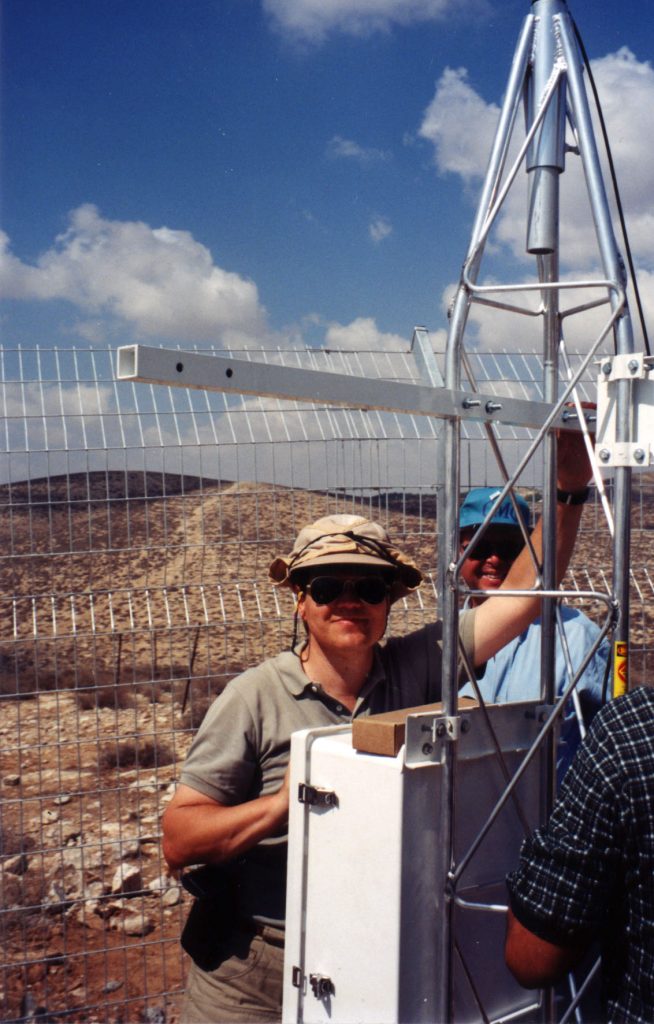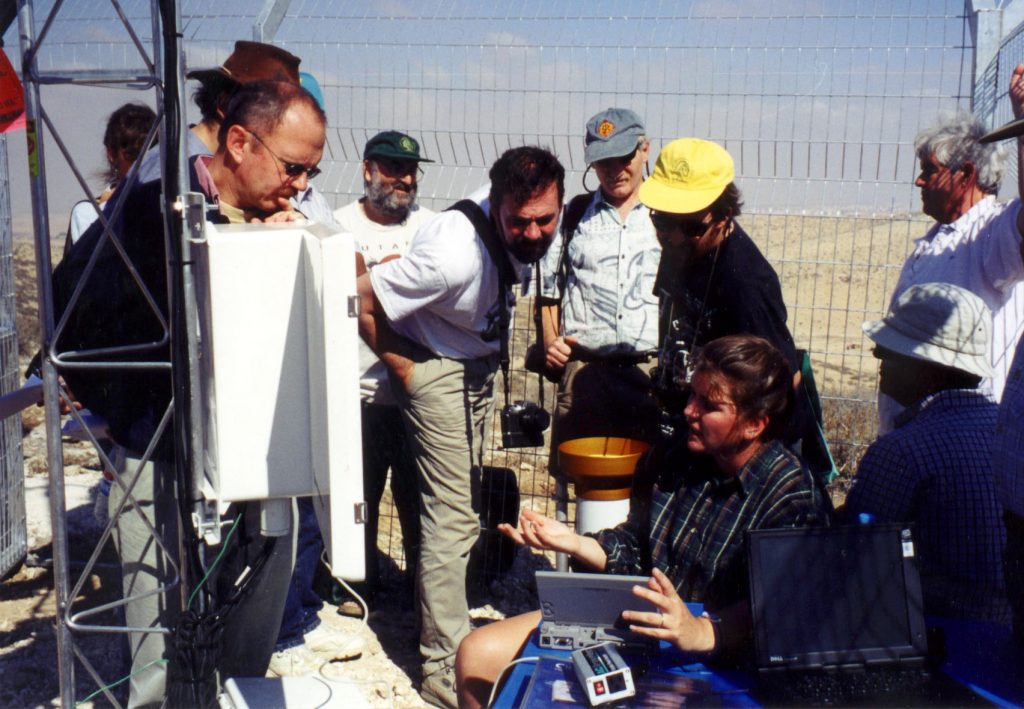
Download 300dpi JPEG image, ‘mideast.jpg’, 337K (Media are welcome to download/publish this image with related news stories.)
ALBUQUERQUE, N.M. — Israeli and Palestinian environmental researchers are collaborating and sharing information through a year-old project initiated by the Cooperative Monitoring Center at the Department of Energy’s (DOE) Sandia National Laboratories.
The cross-border collaboration brings together the scientists to study ways to help maintain shared sustainable grazing and agricultural systems important to the future of both Israel and the Palestinian Authority (PA).
“In the environmental sciences the ecosystem does not function according to political boundaries,” says Ben-Gurion University Professor Moshe Shachak, a preeminent desert ecologist who serves as Israeli coordinator for the project. “Therefore, especially in the Middle East we must have cooperation if we are to have a sound environmental program. The goal of the program is to understand the structure and function of water-limited systems and preserve the services they provide for humans.”
CMC Program Manager Arian Pregenzer initiated the project on Sustainable Land Use Monitoring in the Middle East while visiting Israel in the spring of 1998. During this visit she met Shachak, who was finalizing plans to establish three International Long Term Research (ILTER) sites in Israel. Pregenzer suggested that joint ecological research could be a productive area for collaboration between Israeli and Arab scientists, thereby furthering the Middle East peace process and ultimately regional security.
About a year ago DOE approved a small amount of funding for a collaborative experimental project linking Palestinian, Israeli, and American researchers at the CMC and the University of New Mexico. CMC Environmental Projects Manager David Betsill met with potential research partners in Israel and the Palestinian Authority areas of the West Bank last spring to discuss goals, assess suitability of organizations and individual partners, and view potential field research sites.
Selected as Palestinian project partners were the Agriculture Department of Hebron University and the Palestinian Ministry of Environmental Affairs (MEnA). The Israeli partners were Ben-Gurion University Mitrani Center for Desert Ecology and the Ministry of Agriculture’s Volcani Center.
Meteorological data are fundamental to environmental research but are not readily available to regional scientists. The team members decided to install meteorological stations at four ecological research sites located along a 100-kilometer-long ecological gradient in the northern Negev desert. Precipitation levels at the sites range from 150 to 300 millimeters a year. Two of the stations are in Palestinian-controlled areas of the West Bank and two are in Israel.
Last summer Sandia-supplied monitoring and communication equipment was installed at the research sites for data collection and sharing.
The stations take hourly measurements of air temperature, rainfall, soil temperature, soil moisture, wind speed and direction, barometric pressure, and relative humidity — all variables that help define ecological conditions. The Palestinian and Israeli partners collect and share the data from all the stations weekly by cellular modems. The CMC maintains a Web site so that any researcher in the world can see and use the data.

Download 300dpi JPEG image, ‘mideast1.jpg’, 344K (Media are welcome to download/publish this image with related news stories.)
“The researchers can use the environmental data in a variety of ways, for example, studying long-term climate changes, determining optimum irrigation amounts for specific plants, and monitoring air quality,” says Michael Vannoni, CMC Middle East Program manager. “As a result of this collaboration several joint research proposals to international funding organizations have already been submitted by the partners.”
The CMC has several goals in Palestinian-Israeli confidence building.
“We want to establish a precedent for collaborative projects between Palestinian, Israeli, and US scientists,” Vannoni says. “There has been little in the way of interactions between the scientists in the past, and we hope this project will open doors to future communication and collaboration. Scientific cooperation may lead to cooperation in other topics important to the peace process such as water management and economic development.”
“In one year the project has gone from no one knowing each other to being partners where they are working collaboratively,” Betsill says. “The personal motivation and involvement of the partners was ultimately the key to the success of the project.”
Palestinian Environmental Engineer Hazem Qawasmeh, formerly with MEnA, says he’s participated in joint research with Israeli scientists in the past, but this is the first successful one.
“Politics got in the way of the many previous attempts of communications in the scientific field and rendered successful project implementation useless,” he says. “And that’s what makes this project so special because it provided the success recipe for dealing with potential partners in similar situations. It’s kept at a scientist-to-scientist level and politics is kept out at any cost.”
Last fall Israeli and Palestinian partners joined several American scientists at a meeting at the CMC to talk about the future of the program. One near-future scenario considered was for the Palestinian sites to associate with the ILTER for collection and international sharing of environmental data, including Israel. Other future possibilities include increasing the capacity of the existing four research stations; expanding the system to include Gaza, Jordan, or the southern Negev desert; and developing joint systems for data management and sharing.
“Where we go from here is largely up to the Israeli and Palestinian partners,” Betsill says. We’ve come a long way in a few short months, but it’s only just a beginning.”